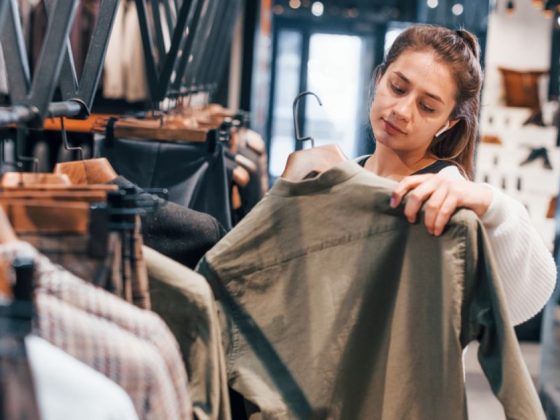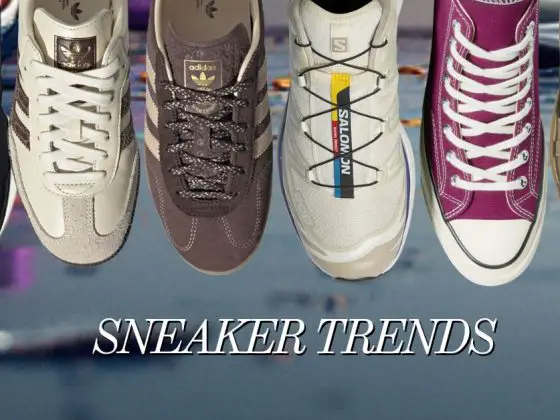 Online shopping has surged in popularity, largely thanks to technological advances that make it incredibly easy and convenient. With only a few clicks and by minding the other buttons, you can access a vast selection of products and services that might not be available at your local stores. You can find great deals and an extensive selection online, from your favorite tea and limited edition handbags and watches, that you might have yet to come across in physical stores. Plus, the convenience of shopping from home makes it even better. Luckily, we’ve handpicked the 10 best online shopping sites to make your experience smooth and enjoyable.
Online shopping has surged in popularity, largely thanks to technological advances that make it incredibly easy and convenient. With only a few clicks and by minding the other buttons, you can access a vast selection of products and services that might not be available at your local stores. You can find great deals and an extensive selection online, from your favorite tea and limited edition handbags and watches, that you might have yet to come across in physical stores. Plus, the convenience of shopping from home makes it even better. Luckily, we’ve handpicked the 10 best online shopping sites to make your experience smooth and enjoyable.
The 10 Trending Fashion Shopping Websites To Try
Online shopping is convenient and enjoyable, but finding trustworthy e-commerce sites can be challenging. Luckily, we’ve prepared the 10 best online shopping sites, ensuring a stress-free and delightful retail experience.
1. Tease Tea
-
What’s good: This brand stands out for its botanical-based tea blends that are fully biodegradable + refillable packaging.
-
Why mention it: Although you’re focusing on fashion shopping websites, including this tea brand shows you’re thinking about lifestyle too (which aligns with your interests).
-
Updated tip: Their shipping is global (they mention “free, worldwide shipping” on their site) — good for your US/UK mobility.
-
Highlight: They explicitly say “meet the world’s first fully biodegradable & refillable tea collection,” which gives a sustainable angle.
2. Boohoo
-
What’s good: A fast-fashion site with very frequent new drops, accessible pricing, and strong trend focus.
-
Why mention: Great for budget-friendly, style-driven audiences.
-
Updated tip: Because of global reach, check international sizing, local duties, and shipping to the Philippines (your location) or other regions.
-
Highlight: Emphasize that while budget-friendly, this kind of fast fashion requires awareness of quality and sustainability trade-offs.
3. American Eagle & Aerie
-
What’s good: The AE brand (and its sister Aerie) offer trendy casual wear: think “mom jeans”, high-waisted bikinis, inclusive sizing, and strong sale periods.
-
Why mention: A nice mid-tier option between ultra-budget and designer.
-
Updated tip: If writing for a global audience, check availability/shipping outside the US — AE has international sites, but stock and shipping vary.
-
Highlight: For lifestyle content, you can talk about their loungewear/comfort-fashion segment, which is quite strong.
4. ILIA
-
What’s good: A beauty brand (rather than purely fashion) but fits lifestyle well — they focus on clean, gluten-free/dairy-free, sustainable packaging, and a recycling program.
-
Why mention: It adds variety (beauty + fashion) and hits your “home & lifestyle” interest.
-
Updated tip: Highlight their recycling program and transparent ingredient philosophy — trending now in 2025.
-
Highlight: For content, you could pair ILIA with lifestyle writing about sustainable beauty alongside fashion.
5. LUISAVIAROMA
-
What’s good: A luxury-designer e-commerce site featuring 600+ brands (Gucci, Balenciaga, etc) plus emerging designers.
-
Why mention: Covers the luxury end of the spectrum in your list.
-
Updated tip: Make a note of shipping internationally, duties/taxes, and seasonal sale events (luxury e-commerce increasingly runs high-end “drops”).
-
Highlight: For your audience of content readers, mention the “aspirational” angle: luxury for fashion-savvy, global market.
6. Kylie Cosmetics
-
What’s good: Founded by Kylie Jenner, it’s a high-visibility cosmetics e-commerce store with strong brand recognition.
-
Why mention: While not pure fashion clothing, cosmetics tie into the broader lifestyle/fashion ecosystem.
-
Updated tip: Ensure international shipping and local region availability (sometimes “US only” exclusives).
-
Highlight: Use the appeal of “brand personality” + social-media driven marketing (very relevant to today’s readership).
7. Nasty Gal
-
What’s good: Started from vintage roots (via founder Sophia Amoruso on eBay) and now a full e-commerce site offering modern & vintage-inspired fashion.
-
Why mention: It offers both narrative (brand origin story) and a strong style-angle (trend-driven, younger audience).
-
Updated tip: As with fast fashion, mention sustainability considerations, shipping, and return policies for a global audience.
-
Highlight: Good example of a brand that successfully transformed from niche to mainstream – you could use this within your content writing for trend commentary.
8. Urban Outfitters
-
What’s good: A lifestyle retailer with fashion, accessories, home décor, and a trend-forward audience.
-
Why mention: Bridges fashion + home & lifestyle nicely (since you like lifestyle topics).
-
Updated tip: The home décor section is strong and fits your home/lifestyle interest — mention that in your article.
-
Highlight: For a global audience, check whether the home goods/shipping translates internationally.
9. The Frankie Shop
-
What’s good: Minimalist-chic, muted tones, wardrobe-staple focus. Founded in NYC’s Lower East Side by Gaëlle Drevet in 2014.
-
Why mention: Correctly in your list as a fashion-savvy site for more refined wardrobe staples rather than trend-flash.
-
Updated tip: Pieces often sell out quickly; signal to readers that timely shopping matters; also mention international shipping.
-
Highlight: Good for your audience looking beyond fast-fashion trends to more durable, stylish wardrobe foundations.
10. Fashionphile
-
What’s good: A specialist in pre-owned luxury handbags, watches and accessories. Founded in 1999, and emphasises authenticity in luxury resale.
-
Why mention: Completes the list with a luxury/resale-angle — for readers wanting high-end investment pieces or sustainable luxury.
-
Updated tip: While reliable overall, check condition descriptions and shipping/duties; some community feedback indicates you should inspect carefully.
-
Highlight: As a content angle, you can note the “luxury resale” trend — useful for lifestyle/fashion writing.
Pros and Cons of Online Shopping
Shopping online means you can only physically touch or see items after purchasing, making comparing prices and reading reviews a bit daunting. However, there are some downsides to consider. Weighing these pros and cons is critical to ensuring a smooth online shopping experience.
Pros of Online Shopping
- Convenience
The first and most apparent benefit of online shopping is its sheer convenience. Imagine shopping at any hour of the day or night, all from the comfort of your home. No more waiting in long lines or hunting down a cashier. With just a few clicks, you can find what you need and deliver it to your door. This 24/7 availability makes it incredibly easy to fit shopping into even the busiest schedules, and you don’t have to worry about store hours or geographic limitations.
- Greater Selection
Besides convenience, one of the great things about shopping online is the huge variety of options available. Unlike physical stores, online retailers can develop product extensions, from popular items to unique finds. It means you can browse countless options without being constrained by local inventory. For instance, if you’re looking for a new lamp, online shopping allows you to explore styles and brands worldwide, giving you a much broader selection than in nearby stores.
- Variety
Online shopping offers a wealth of information that’s often more detailed than what you’d find in physical stores. Instead of relying on a few sales associates, you can easily access comprehensive product descriptions, user reviews, and recommendations for similar items. This abundance of information helps you make well-informed decisions and compare options with just a few clicks, ensuring you find exactly what you’re looking for.
- Cost
Online shopping often brings the best deals straight to your fingertips. Since many products are sold directly by manufacturers or sellers, there’s no need for intermediaries, which can result in lower prices. Plus, the convenience of comparing prices across different sites means you can quickly spot the best bargains.
- No Crowds
The busy shopping season in a physical setting can be overwhelming and stressful, especially during holidays or weekends. Not having to navigate through crowds of people or hunt for a parking spot makes a huge difference. Shopping online lets you skip all that hassle. By browsing your preferred e-commerce platform, you can easily browse and buy at your convenience without feeling rushed or squeezed by the crowd.
- No Pressure
When we shop in person, we are often expected to buy things we don’t need. This often happens because salespeople use their skills to pressure us into making purchases. Their persuasive tactics can make us feel obligated to buy items, even if we’re not entirely convinced.
- Discreet Purchases
Shopping online makes it easier to buy things discreetly from the comfort of your own home. This applies to nasty products like adult toys, sexy lingerie, or other personal products. Online shopping gives a level of privacy that in-store shopping can’t offer.
Cons of Online Shopping
- Risk of Fraud
Shopping online has risks, particularly when it comes to fraud. The Federal Trade Commission (FTC) says scammers frequently create fake websites or ads to fool unsuspecting shoppers, making online shopping a fraud hotspot. These fraudulent activities can include credit card scams, phishing, and identity theft, so it’s crucial to stay vigilant.
To protect yourself, always use a credit card (CC) in every transaction instead of using a debit card. Credit cards offer better fraud protection and easier dispute processes. Aside from that, be cautious of sellers who only accept payments through money transfers, gift cards, or cryptocurrencies, as these methods can be red flags for scams. Despite advancements in online security, cybercriminals continue to find new ways to target shoppers, so safeguarding your personal and financial information should always be a priority.
- Delivery Delay
When you shop in a physical store, you can walk out with your purchase immediately and start using it right away. However, online shopping means you often must wait days or weeks for your order to arrive. Going to a brick-and-mortar store might be your best bet if you’re on a tight schedule and need something quickly, like a last-minute gift.
Even with top-notch shipping companies and retailers, delivery can be unpredictable. Due to various issues, such as logistical challenges or lousy weather, items can get lost, delayed, or sent to the wrong address.
- Damaged Item
While some online sellers make returns easy, some complicate the process. This problem makes it difficult to get a refund or return items. You may also need to be reimbursed for shipping costs, adding to the hassle.
- No Sales Assistance
When shopping in a physical store, you typically have sales associates ready to assist you with any questions or concerns. However, online shopping often leaves you navigating the process alone without immediate, personalized help. This can lead to frustrating blind purchases and regrettable mistakes if you can’t get the answers you need before buying.
Online retailers sometimes need more customer support, making resolving issues or seeking assistance challenging. Unlike in-store shopping, where you can directly interact with staff and inspect products, the lack of personal interaction online can make getting the help you need harder.
- Environmental impact of the packaging
Online shopping has environmental downsides, mainly due to the packaging and shipping processes involved. Waste from packaging materials, along with carbon emissions from transportation, add up and impact the environment. This growing trend in online shopping makes it crucial to be mindful of these issues and look for ways to support more sustainable practices.
As more people shop online, the environmental effects of packaging waste and shipping become more pronounced. Taking note of these concerns is highly important for promoting sustainable consumption and reducing our overall ecological footprint. Choosing eco-friendly options and being aware of the environmental impact can help mitigate some of these adverse effects.
Click, Shop, and Stay Smart
Online shopping has revolutionized retail with its unmatched convenience and vast selection. You can shop anytime, anywhere, and explore a global range of products without leaving home. From trendy fashion to unique vintage finds, online stores offer more variety and detailed information than traditional shops, making it easier to score great deals. But it’s not all smooth sailing. Be cautious of risks like fraud, delivery delays, and environmental impacts from packaging. Choosing reliable sites and staying informed guarantees a smooth and fun online experience.















